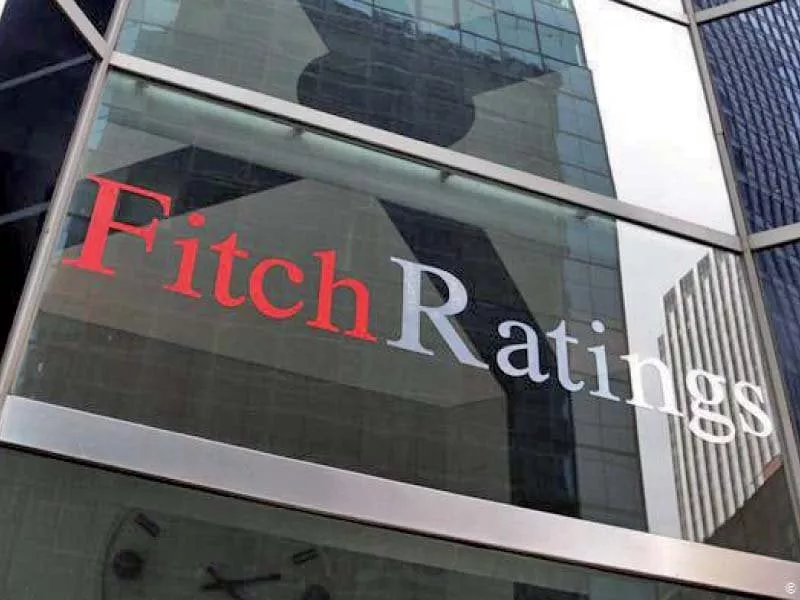Pakistan faces tough road ahead
Fitch anticipates economic shock will make meeting FY21 targets challenging
KARACHI: Fitch Ratings has anticipated that Pakistan's borrowing will remain higher than what Islamabad has estimated to finance the fight against coronavirus pandemic, which will push its fiscal deficit up to 9.5% of gross domestic product (GDP) in the current fiscal year.Earlier this week, the government of Pakistan projected the deficit at 9.1% for the outgoing year. It had set the original deficit target at 7.1% before the Covid-19 outbreak.
"Pakistan's fiscal consolidation targets presented in its FY21 budget on June 12 will be challenging to meet amid the economic shock and health crisis associated with the coronavirus pandemic," Fitch - one of the top three global rating agencies - said.
It forecast the fiscal deficit at 8.2% of GDP compared to the 7% target for the next fiscal year (FY21), starting July. Increased borrowing would push "the public debt-to-GDP ratio up to 89% of GDP", it said.
The government has estimated the debt-to-GDP ratio at 88% earlier this week. Fitch, however, left Pakistan's credit rating at 'B-' with a stable outlook.
IMF, other creditors
Fitch said the International Monetary Fund (IMF) and other bilateral and multilateral creditors would continue to help Pakistan finance its public support programmes due to emergence of the challenging health crisis.
"We expect the IMF to be flexible in its programme targets with Pakistan given the magnitude of the pandemic shock, and expect the release of accumulated tranches from the EFF (Extended Fund Facility) over the coming months. Additional financing has also been forthcoming from other multilateral and bilateral creditors," the rating agency said.
Pakistan also received $1.4 billion in emergency support from the IMF under the Rapid Financing Instrument in April, in addition to the $6-billion loan facility under the EFF programme.
Foreign currency reserves
The country's rating also reflects a fragile external position given the sovereign's high external debt repayments. Liquid foreign exchange reserves remain low at around $10.1 billion, "but import compression has increased the reserve import cover to about 3.6 months", it said.
"Moreover, lower oil prices are expected to offset the decline in remittances, which will keep the current account deficit stable at around 2% of GDP through FY21."
External liquidity will be supported by the country's participation in the G20's Debt Service Suspension Initiative, which the government estimates will delay debt servicing payments in 2020 of around $1.8 billion.
"The initiative involves only bilateral creditors at present and the Pakistani government has indicated that it has no plans to seek (G20's) private-sector debt service suspension."
Credit weakness
Pakistan's increased dependence on borrowing in the absence of a required higher growth in revenue collection has kept intact its credit weakness.
"Public finances are a key credit weakness, as we noted even before the health crisis took hold when we affirmed Pakistan's rating at 'B-' with a stable outlook in January 2020. Nevertheless, continuing support from the IMF and other official creditors should help the government finance its budget and contain risks associated with the country's fragile external position."
"Revenues fell short of target, due both to the economic fallout from the pandemic and the fact that the budget goal was overly ambitious, in our view."
Current expenditures were also boosted by the government's Rs1.2 trillion (2.9% of GDP) support package in March to boost health spending and provide assistance to low-income households.
The new budget forecasts a decline in the fiscal deficit to 7% of GDP in FY21. However, this assumes tax revenue will increase by 28% from the estimate for FY20, and will prove challenging in the absence of new tax measures, especially if economic growth remains sluggish, the agency said.
Expenditure is forecast to decline modestly as a share of GDP, although the government aims to boost healthcare spending and support to low-income households through its Ehsaas programme. "Further expenditure cuts could be implemented if revenues fall short of target," it said.
The higher debt-to-GDP ratio at 89% of GDP would be above the median level of 66% among Pakistan's rating peers in that year. "We expect that the ratio will begin to fall after FY21, but this remains contingent on the government's ability to make progress in fiscal consolidation and on GDP growth rates," Fitch said.
The government's limited fiscal headroom within its rating category will constrain its ability to provide a more robust fiscal response to the coronavirus. The number of Covid-19 cases continues to rise rapidly, increasing by over 40,000 in the week to June 15.
Published in The Express Tribune, June 20th, 2020.
Like Business on Facebook, follow @TribuneBiz on Twitter to stay informed and join in the conversation.


COMMENTS
Comments are moderated and generally will be posted if they are on-topic and not abusive.
For more information, please see our Comments FAQ